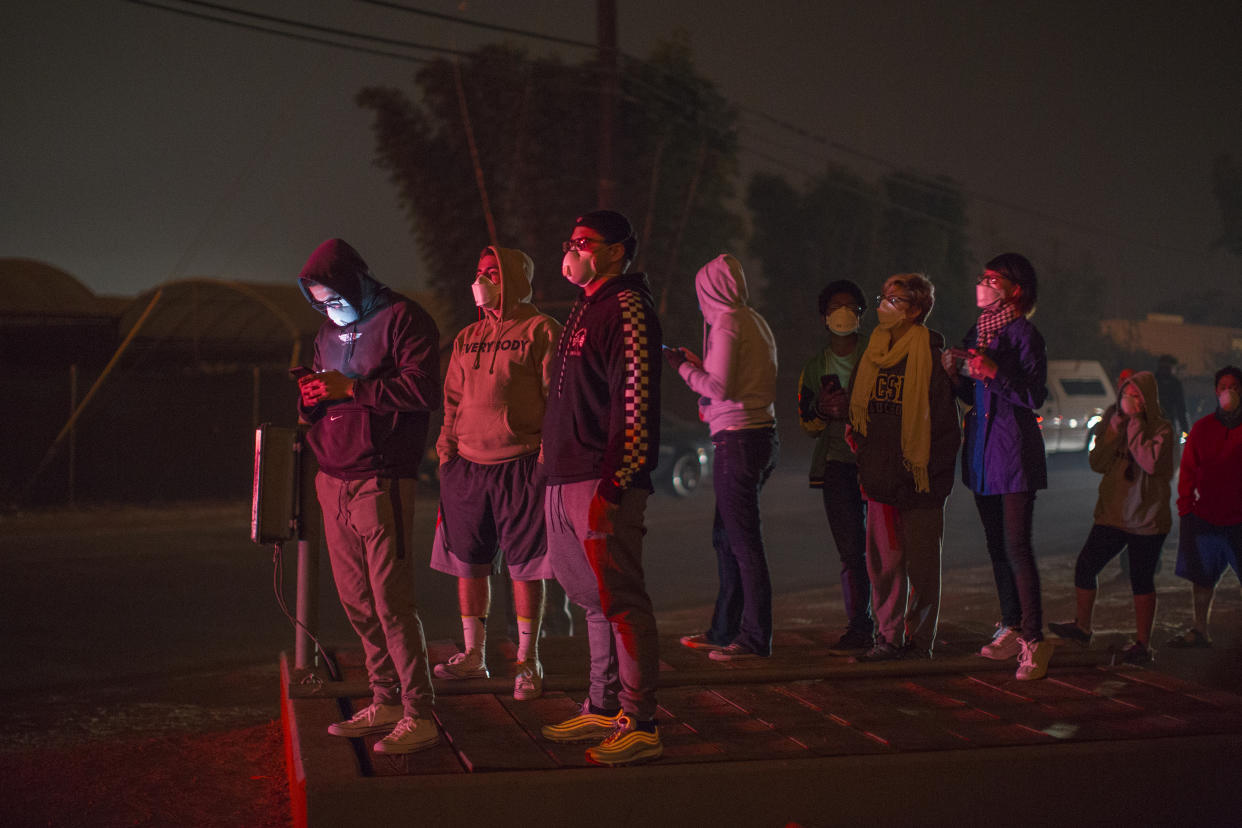Should you be wearing a mask during a wildfire? Here are 5 ways you can protect yourself
As the California wildfires continue to rage, the air pollution in several affected areas has spiked to concerning levels. Smoke inhalation can cause health issues in most people, and those with respiratory and heart problems are at an even greater health risk. During a wildfire, wearing a mask can keep you from inhaling smoke particles. But it won’t be enough to keep you safe from smoke’s harm.
According to the California Department of Health’s face masks factsheet, “particulate respirator” masks labeled with “NIOSH” and either “N95” or “N100” will effectively block fine smoke particles from entering your respiratory system. Choose a particulate respirator mask with two straps. These masks can be purchased at most hardware stores and some pharmacies.
However, these masks are only recommended for short-term use. Particulate masks do not filter out harmful gasses like carbon monoxide or formaldehyde, which usually accompany wildfire smoke. It should also be noted that children and those with heart or lung disease may not be able to use these masks.
If you’re concerned about what steps to take in order to protect yourself and your family, here are some tips about using masks and getting to safety.
1. Do not use fabric in lieu of a mask.
Wearing a mask is the only way to prevent smoke particles from entering your respiratory system. Although damp fabric or clothing can help you breathe and relieve dryness, this method will not filter out smoke particles and gasses.
The Southern California fires so far: Lilac, Skirball, Creek and Rye fires are mostly contained, but the Thomas fire is raging out of control at 230,500 acres https://t.co/J30cNxYQ6F pic.twitter.com/dv9hEstPwJ
— Los Angeles Times (@latimes) December 11, 2017
2. Do not rely on masks as a permanent smoke inhalation prevention method.
Because particulate masks do not filter out harmful gasses and toxins, they are not meant to be worn as an alternative to moving to a higher air quality area. Wear these masks while you prepare to evacuate. Moving away from the smoke and fire is the only way to prevent smoke inhalation symptoms.
3. Consult the Air Pollution in California: Real-time AQI Visual Map.
The Air Quality Index (AQI) Visual Map updates the air quality levels in real-time. Residents can clearly see where air quality is the poorest, who has the greatest risk of experiencing serious health effects, and where one can move to get away from polluted air. Currently, Santa Barbara County is experiencing an unhealthy amount of air pollution with an AQI of 197.
Climate change will bring severe, longer wildfire seasons, scientists say https://t.co/5PUoLRozKr
— The New York Times (@nytimes) December 9, 2017
4. Stay indoors, and keep windows and doors closed.
If you have not been ordered to evacuate, stay indoors. Keep all windows and doors closed and your air conditioner on. Running an indoor air filter is also recommended by the Air Quality Management District via scpr.org.
Similarly, keep the doors and windows of your car closed with the air conditioner on (make sure air is circulating and not being brought in from the outside). Cars are not a suitable shelter from smoke and should only be used to evacuate.
Photos and video show terrifying spread of California's Thomas Fire: https://t.co/KdQXeOOXQw pic.twitter.com/mM0tcThoZL
— Mashable (@mashable) December 11, 2017
5. Pay attention to government alerts.
Stay connected to social media and news sources in order to be alerted to evacuations. Have an evacuation plan ready and pack your car ahead of time. Always comply with government issued warnings to remain as safe as possible.


